














Winship Cancer Institute lung cancer researcher Adam Marcus and his lab team, in an attempt to imitate metastasis, embedded lung cancer cells in a gel and let them invade surrounding tissue for 24 hours. These lung cancer cells have a mutation of a gene called LKB1 (in green) that promotes invasion. Actin, a cytoskeletal protein, is in red, and the cell nucleus is blue. This is one of more than 80 images in the National Cancer Institute’s Cancer Close Up 2016 project.


When Captain Chesley Sullenberger and the crew of US Airways Flight 1549 performed the “miracle on the Hudson” after bird strikes took out both engines, every minute mattered.
Listening to the cockpit recordings of those defining moments are an inspiring call to action for those of us in health care. The flight crew was prepared, plans for such an emergency were in place, communication was crisp and clear, checklists were followed, decisions were made, and the skill and expertise of every team member brought all 155 passengers and crew members home safely.
Editor Mary Loftus
Art Director Peta Westmaas
Director of Photography Jack Kearse
Christian Larsen Dean, Emory School of Medicine President, Emory Healthcare Physicians GroupLikewise, in the fight for survival after sepsis strikes, minutes matter. More than 258,000 people in the United States die from this condition annually, according to the CDC, which recently declared sepsis a medical emergency. As a national and regional resource for patients with complex and critical illnesses, our Emory care teams know well that sepsis is a constant threat.
Led by clinical nurse specialist Mary Still and intensivists David Murphy and Craig Coopersmith, our Emory teams have developed early sepsis detection systems and rapid response protocols, supported by computerized order sets and systematic monitoring of our process reliability and outcomes (p. 29).
As you will read, our teams relentlessly pursue the development of better care with a zero-defects mentality. Coopersmith is not only taking the lead in redefining sepsis care at Emory, he is a coauthor of the new national guidelines for sepsis care published in the February 2016 issue of the Journal of the American Medical Association.
And, as an ICU nurse who understands the importance of minute-to-minute care at the bedside, Still knows well that an ounce of prevention is worth a pound of cure. Take one of the most common harms experienced by patients in health care settings: bed sores. More than half a million Americans are hospitalized annually for pressure ulcers, many of them frail and elderly.
As Still discovered, having a “turn team” dedicated to repositioning Emory surgical ICU patients every two hours had a dramatic impact. “This simple, easy-to-do, no-cost idea cut our rate of pressure ulcers by 70 percent,” Coopersmith says.
Here’s to warding off catastrophes by knowing what to do and then doing it, each and every time.
Contributing Writers Pam Auchmutey, Quinn Eastman, Jerry Grillo, Martha McKenzie, Sylvia Wrobel

Graphic Designer Linda Dobson
Production Manager Carol Pinto
Web Specialist Wendy Darling
Exec Dir, Health Sciences Creative Services Karon Schindler
Associate VP, Health Sciences Communications Vincent Dollard
Editorial intern Aspen Ono 18C
EDITORIAL ADVISORY BOARD
Chair Ray Dingledine, PhD, Professor and Chair of Pharmacology, Emory School of Medicine
Charles Craig, Consultant and former President, Georgia Bio
Robert Goddard III, Chair and CEO, Goddard Investment
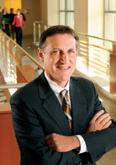
Lucky Jain, MD, Interim Chair,- Pediatrics, Emory
Claire Perdue James, Philanthropist
Jeff Koplan, MD, MPH, VP, Global Health, Emory
Kimberly Manning MD, Associate Professor of Medicine, Emory
Margery McKay, VP, Health Sciences Development
Paul Pendergrass, Independent Communications Consultant
Julie Ralston, Director of Communications, Atlanta Regional Commission
Walker Ray, MD, Retired pediatrician, former president of the Emory Alumni Association
Bill Todd, Exec Director for Health Care Initiatives, College of Management, Georgia Institute of Technology
Emory Medicine is published three times a year for School of Medicine alumni, faculty, and staff, as well as patients, donors, and other friends. © Emory University
Please send correspondence to Emory Medicine, 1762 Clifton Road, Suite 1000, Atlanta, GA 30322; call 404-727-0161 or email mary.loftus@emory.edu.
Emory University is an equal opportunity/equal access/affirmative action employer fully committed to achieving a diverse workforce and complies with all federal and Georgia state laws, regulations, and executive orders regarding nondiscrimination and affirmative action. Emory University does not discriminate on the basis of race, age, color, religion, national origin or ancestry, sex, gender, disability, veteran status, genetic information, sexual orientation, or gender identity or expression.
Learning to Love Our Bugs 16
Our microbiome—the billions of tiny organisms that live inside us—is more influential than previously thought and has a powerful impact on our health.
Season of Our Discontent 22

A straight-speaking doctor from the Emory Midlife and Menopause Center sat down with a group of women going through “the change” to answer any and all questions and address their most troubling concerns.


Sepsis is more fatal than a heart attack, and kills more people in the U.S. than prostate cancer, breast cancer, and AIDS combined. How medical teams are fighting back with fast action.
Letters 4
4 | People are talking 5 | Outrun illness 5 | The Big Idea: Aiming to defeat HIV 6 | Olympic doc

6 | Healing tendons 7 | The Big Picture: A new bridge across Clifton
8 | You Be the Doctor: When darkness prevails 9 | Sneak attack
9 | Too much sugar for kids
10 | Helping patients with hemophilia
12 | Massage away anxiety
12 | Football risks 14 | Emory Dizziness and Balance Center
15 | Zika research ramps up
“Her life had become a solar nightmare. Transient exposure to sunlight caused her skin to burn, and her eyes to become intolerant of light. Now a nocturnal being, she travels only at night, her existence confined to the shadows.”
Investing in Discovery 34
34 | Windows of Opportunity
35 | Gifts of Note
Last Word: Worth the Price? 36
Oncologist Daniel Goldstein discusses the high cost of cancer drugs and other medications.

I wanted to comment about the Q&A on Transcranial Magnetic Stimulation (Emory Medicine, Spring 2016) used for treatment-resistant depression. As a mental health advocate and a lay depression expert to my late spouse, I found that this article—along with many others—tries to instill hope but omits costs of treatment and that Medicare/Medicaid and most private health insurance carriers do not cover this treatment. My wife, Joyce, passed away in December. She su ered from major depressive disorder for 36 years but was depression-free these past 17 years despite her advancing decline from Parkinson’s, which I attribute to her vagus nerve stimulation therapy (another therapy o en not covered for patients.) Individuals su ering from serious mental health challenges for decades have been severely hampered nancially and are prevented from trying new treatment options by lack of coverage.
My 55-year-old husband was recently admitted to the hospital with chest pains, shortness of breath, and erratic blood pressure. He had a balloon angioplasty and stent placement for a 90-percent blocked artery, and is doing well. e medical team said he prevented a major heart attack by listening to the warning signs, and that the damage he had to his heart was reversed by the stent. In hindsight, the warning signs had been happening for more than a year: fatigue/naps, night sweats, shortness of breath (he has asthma so it was masked). He is a very grateful patient. e rst thing I saw in his hospital room was Emory Medicine magazine, and believe me it was a comfort. While he slept between procedures I read the magazine. Your story on Sylvia Ennis’s amazing recovery (Emory Medicine, Spring 2016, “Surviving the Unsurvivable”) needs to be shared on a wider basis. What incredible work.
Michelle Valigursky Associate Director, Emory Alumni Association AtlantaI am a grad of Candler School of eology at Emory. My wife and I were moved by Sylvia Ennis’s story. As a pastor, I had a church member who had an “angel” assist him a er an automobile accident. Sound familiar? ank you for your presentation of this very unusual story. During the early 1970s I regularly traveled Cli on Road!
Jim & Mary Ann Harless Kingsport, Tenn.A er I read Sylvia Ennis’s amazing story, I just sat still for a few minutes in awe and disbelief. I was full of so many emotions I couldn’t move. I admire her strength, steadfastness, tenacity, and faith, she is a magni cent person.
Kristi Logue Emory School of Nursing AtlantaWe like to hear from you. Send us your comments, questions, suggestions, and castigations. Address correspondence to Emory Medicine magazine, 1762 Clifton Road, Suite 1000, Atlanta, GA 30322; call 404-727-0161; or email mary.loftus@emory.edu.
Frans de Waal, primatologist and Learning Links director at Yerkes National Primate Research Center, in The Atlantic
“Sleep-deprived people lose the ability to know they’re sleep-deprived. You get so used to that foggy-headed, not-right feeling that it becomes your new norm.”
Sharon Bergquist, internist, Emory Special Diagnostic Services, Fox 5 Atlanta.
“Sixty-two percent of us use our smartphones to look up health information, according to the Pew Research Center. I see an opportunity to tap into that and use different tools of engagement to reach and educate the patients we see.”
Mohamed Kelli 15MR, cardiology fellow, in the Atlanta Journal- Constitution
“Humans are usually tested by their own species, and apes are tested by us, another species. This situation hampers them from the outset. Absence of evidence is not evidence of absence.”
Emory researchers have found that while symptoms of mild to minimal depression are associated with early indicators of heart disease, regular exercise seems to reduce the adverse cardiovascular effects of depression.

Cardiologist Arshed Quyyumi, co-director of the Emory Clinical Cardiovascular Research Institute, and colleagues studied 965 people who were free of heart disease and who had no prior diagnosis of an affective, psychotic, or anxiety disorder. Thirty-five percent of the participants were men and 39 percent were African Americans.
“This study shows that meeting physical activity guidelines can offset the deterioration in vascular health that accompanies depressive symptoms and provides further evidence that regular physical activity is beneficial to everyone,” says Quyyumi, the study’s lead investigator. The study was published in the Journal of the American College of Cardiology
HIV researchers are becoming increasingly bold about using the “cure” word in reference to HIV/ AIDS—even though the “Berlin patient,” whose HIV cleared a er a stem cell transplant, remains a singular event.
Although many patients taking antiretrovirals have achieved “undetectable” viral loads, a true cure has remained elusive.
Research to develop HIV cures and vaccines got a boost recently, however, when the NIH awarded a $35.6 million, ve-year grant to an Emory-led group. Investigators in the Emory Consortium for Innovative AIDS Research in Nonhuman Primates plan to re ne existing “shock and kill” approaches that seek to eliminate the virus from latent reservoirs in people who are infected with HIV (or SIV, in nonhuman primates), enhancing the possibility of a cure.
Emory scientists also are working on developing advanced vaccines that provide sustained protection from retroviral infection.—Quinn Eastman
GOING
U.S. News and World Report named Emory University Hospital (EUH) the No. 1 hospital in Georgia and Atlanta for the fifth consecutive year, and Emory Saint Joseph’s second. Emory University Hospital Midtown ranked ninth in the state and fifth in Atlanta. EUH ranked nationally in cancer, cardiology, diabetes and endocrinology, geriatrics, neurology and neurosurgery, and orthopedics. ■
HIV is constantly mutating. That means the virus can, in effect, customize itself so that it is less visible to someone’s immune system. If a newly HIV-infected person is fighting a virus that has already “pre-adapted” to their immune system, that has a strong influence on how quickly that person will progress to AIDS, found a team of researchers led by scientists from Emory, Microsoft Research, and the University of Alabama at Birmingham. The results have implications for HIV vaccine design and how future vaccine studies should be conducted. ■



Many of us know the feeling: a tendon we stressed during jogging, tennis, or lawn work continues to dog us, especially during similar activities. Almost 40 million people in the U.S. su er from tendinopathy, a chronic injury to those exible cords of tissue that attach our muscles to our bones. In general, patients use ice, rest, pain relievers and injections, physical therapy, surgery, or other topical treatments to alleviate symptoms.
But Emory sports medicine physician
Kenneth Mautner and colleagues from Georgia Tech have developed a tool that could improve healing speed. e Automated Percutaneous Needle Tenotomy instrument punctuates the tendon with a small needle, causing a controlled injury,

which initiates healing and growth of new, healthy tendon. Using needles to aggravate injured tendons is an existing treatment for tendinopathy, although it is currently conducted with a traditional needle or with a percutaneous procedure in a surgical center.
e new instrument would allow the treatment to be performed in an orthopedic o ce. A prototype has been tested with promising results. “ e biomechanics of this procedure are already proven to be e ective,” says Cli Michaels, assistant director of Emory’s O ce of Technology Transfer. “ is just increases the e ciency and reliability of the treatment.”
Aspen Ono 18C
A two-story, steel-and-glass pedestrian bridge is taking form over Clifton Road as Emory University Hospital continues progress on its latest addition: a nine-level, 450,000-square-foot hospital tower. Slated to open by next summer, the J wing will feature 232 patient beds, patient care units for cancer and transplants, ICU rooms, and diagnostic and treatment spaces. The new bridge will connect J wing to the main hospital on the second and third floors. The current pedestrian bridge will be torn down when the new bridge is operational.
 THE BIG PICTURE
THE BIG PICTURE
Any time physicians dwell in the land of causality, they exist in treacherous terrain.
Connecting the dots between a speci c event and subsequent illness or injury is o en tethered by only the most tenuous sliver of time. You cannot assume that temporal correlation equals causation.
Nausea and vomiting a er supper? More likely due to contaminated food eaten much earlier in the day than food recently consumed.
Both empiricism and the laws of nature have to be respected by physicians as they attempt to explain the why of a diagnosis.
A potential diagnosis reaches its highest validity when doctors have an exact etiology, the explanatory epitome of why one su ers from a particular a iction.
Still, there are times when even the best diagnosticians come up wanting in their quest for a clear explanation.
e late Emory poet-cardiologist John Stone wrote, “ ere may be no answer . . . and you will look smart and feel ignorant . . . and whole days will move in the direction of rain.”
A patient evaluated at the Emory Special Diagnostic Services clinic highlights this occasional failure to diagnose and explain.
e patient, who was in her 50s, had undergone aesthetic laser treatment of the “baggy under-eye area” two years earlier.
Despite the limited surface area initially targeted, the procedure soon led to extensive skin irritation, with involvement spreading from the original site. Repeated episdoes of ushing and other debilitating systemic symptoms soon ensued.
Her life had become a solar nightmare. Transient exposure to sunlight caused her skin to burn, and her eyes to become intolerant of light. Now a nocturnal being, she travels only at night, her existence con ned to the shadows.
e laser therapy seems to have been the temporal and probably causal culprit.
As to the why, however—the etiology, the reason, which could lead to e ective treatments for her su ering—ignorance reigns.

What if the laser procedure had nothing to do with her symptoms? is possibility must be considered. Perhaps it was an unrecognized, pre-existing autoimmune condition, predisposing her to the reaction. It could have been autonomic problems, a virus, hormones—a host of other underlying possibilities presented themselves.
Extensive consultation with specialists, laboratory testing, and radiologic imaging were not enlightening.
Even if it was the laser, what made the therapy so devastating for this patient while other patients recovered quickly and completely?
So while the physician may deduce that the patient’s face was red and in amed due to the laser treatment, many unknowns remain: Why did the laser provoke such a reaction? Why did it spread? Why will it not go away? And why did it generate such di use symptoms?
We’re still searching for answers. And the patient, like her diagnosis, continues to struggle along in darkness. ■
is case is shared by Clyde Partin, director of the Emory Special Diagnostic Services (ESDS) clinic, which can be reached at diagclinic@emoryhealthcare.org
“Ever tried. Ever failed. No matter. Try again. Fail again. Fail better.”
Worstward Ho , Samuel Beckett
Nearly half of sudden cardiac deaths occur in people who were unaware that they had heart disease.

An electrocardiogram (ECG or EKG) may be helpful in measuring the risk of cardiovascular disease even in people without symptoms, Emory researchers have found.
A team led by cardiologist Amit Shah used data from the National Health and Nutrition Examination Survey, which followed about 10,000 adults ages 40-74 for cardiovascular events, to derive a risk equation based on a patient’s age, gender, and three ECG metrics: heart rate, T-axis, and QT interval.
Using these measurements combined with the usual standard of care, researchers were able to improve risk classi cation of cardiovascular death by 25 percent.

“Although ECGs are normally used to diagnose present-day heart disease in individuals believed to be at risk, many asymptomatic patients with normal ECGs may have electrocardiographic signs of disease that could predict future risk,” Shah says. “We believe that this is a potential added bene t of the ECG—to help screen for high-risk individuals and ultimately augment preventive e orts in clinical settings.” ■

Children and teens ages 2 to 18 should consume less than 6 teaspoons of added sugars each day, according to new recommendations published in the American Heart Association journal Circulation.
Added sugars are any sugars, including table sugar, fructose, and honey, used in processing and preparing foods or beverages, added to foods at the table or eaten separately—not naturally occurring sugars in foods like fruit or milk.
Eating foods high in added sugars throughout childhood is linked to the development of risk factors for heart disease, such as an increased risk of obesity and elevated blood pressure.
“There has been a lack of clarity and consensus regarding how much added sugar is considered safe for children, so sugars remain a commonly added ingredient in foods and drinks, and overall consumption by children remains high— the typical American child consumes about triple the recommended amount of added sugars,” says lead author Miriam Vos, nutrition scientist and associate professor of pediatrics at Emory.
Their recommendation of no more than 6 teaspoons of added sugars per day, “is a healthy and achievable target,” says Vos.
Vos and Emory colleague Jean Welsh were part of a national panel of experts who did a comprehensive review of scientific research on the effect of added sugars on children’s health.
The major sources of added sugars in American diets are regular soft drinks, candy, cakes, cookies, pies, and fruit drinks; dairy desserts and milk products (ice cream, sweetened yogurt,) and other grains (sugar-laden cereals and breakfast foods, for instance).
Vos says children who eat foods loaded with added sugars tend to eat fewer healthy foods, such as fruits, vegetables, whole grains, and low-fat dairy products that are good for their heart health.
Other highlights of the AHA statement include:
n Added sugars should not be included in the diets of children under the age of 2, at all.
n Children and teens should limit their intake of sugar-sweetened drinks to no more than 8 ounces weekly.
n Overweight children who continue to consume more added sugars are more likely to be insulin resistant, a precursor to type 2 diabetes.
—Jennifer JohnsonTHE AVERAGE AMERICAN CONSUMES 22 TEASPOONS OF ADDED SUGAR A DAY, which equals an extra 350 calories. Sugar-sweetened drinks and breakfast cereals are two of the worst offenders. Here are some common foods and the amount of sugar they contain:
WHEN HE WAS A CHILD, DOCTORS PREDICTED THAT BOB HARRIS WOULD DIE AS A TEENAGER. Despite the fact that his blood didn’t clot normally, however, his parents refused to coddle him. ey also actively advocated for more resources for hemophilia patients in Georgia.
















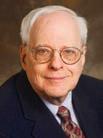

Aging was new territory for hemophiliacs, and as Harris embraced marriage, traveling, and hobbies (including, ironically, knife collecting) as a young man, he met Sidney Stein, a hematologist at Emory University Hospital.
At that time, in the early 1980s, Stein was becoming the point person for Georgia families seeking the latest discoveries in benign blood disorder research.


Harris, Stein said, would need to make some long-term changes, starting with no more nail biting. As the years went by and Harris continued to push his limits, Stein remained blunt and always thorough. Stein’s dedication to clinical care, research, and education helped lead to longer lives for hemophilia patients treated at Emory and to Emory’s adoption of a national model for the care and treatment of people with hemophilia.“ e passion in his tone has grown over the years, despite the risky things I’ve done, like two knee replacements and several surgeries,”
says Harris. “I’ve probably given him heart failure, and he’s challenged me.”





















































Harris, 66, is alive because of the surge in research and knowledge around hemophilia. And his grandson, Mason, who also has the disease, can expect a brighter future in part due to his family’s advocacy.

e Emory/Children’s Healthcare Hemophilia Treatment Center is one of the largest of its kind in the country. Its director, Christine Kempton, is a national leader in the treatment of bleeding disorders, and four Emory researchers have gone on to direct hemophilia centers in other cities.
Because patients with blood disorders who see a broad spectrum of specialists lived longer than those treated by a hematologist in a private setting, Stein set up Emory’s clinic for holistic care. Because so many patients did not know they needed comprehensive care, he advised Hemophilia of Georgia on hiring outreach nurses, who visited patients at home. is made Emory’s bleeding disorder program the rst in the country with a public health outreach component. “We have been very fortunate to have what we have,” says Patricia Dominic, retired CEO of Hemophilia of Georgia.
e clinic’s establishment in the 1980s coincided with the beginning of the HIV epidemic, which devastated the nation’s blood supply. e Centers for Disease Control and Prevention (CDC) was instrumental in the rst successful techniques to treat clotting factor to prevent the spread of HIV. Stein worked with the CDC and reviewed the techniques and products that promised to scrub the blood clean of HIV and hepatitis C. rough this scrutiny, countless recalls of blood were avoided and lives were saved.
Stein helped create the Hemophilia Hotline, a 24-hour physician-to-physician service for Georgia doctors who need emergency treatment information. Nine hematologists across Georgia sta the hotline. “We’ve been able to take the management, treatment, and cure for hemophilia forward in ways that I personally could never have done without Hemophilia of Georgia,” Stein says. “Its
mophilia inject a protein (factor VIII or factor IX) into their blood; the clotting factor is obtained through for-pro t specialty pharmacies or nonpro ts such as Hemophilia of Georgia.
About 30 percent of people with severe hemophilia A develop antibodies to factor VIII and keep it from working correctly. Pete Lollar, the Hemophilia of Georgia Chair in Hemostasis, has worked for more than 25 years to understand the basic mechanisms of this type of bleeding and to develop a genetically modi ed factor VIII

Lollar’s team developed and received FDA approval for a synthetic factor VIII product called Obizur,

VIII. Emory research led by H. Trent Spencer and Christopher Doering could lead to the development of gene therapy for patients with hemophilia and the end of daily injections.
“Before, patients would wait to bleed before they injected themselves with clotting factor,” Stein says. “Now they inject before they bleed. National data shows that there is much less joint destruction, and they are able to lead more normal lives. When you couple that with other new treatments, patients may soon be injecting only once a week instead of three times, and that’s big. One day patients may rarely have to inject themselves at all.”
Michelle HiskeySwedish massage therapy provides significant improvement in generalized anxiety disorder (GAD) symptoms, found Emory researchers. A time-limited course
of massage may be an e ective and reasonable treatment alternative for anxiety and depression, says lead researcher Mark Hyman Rapaport, Reunette W. Harris
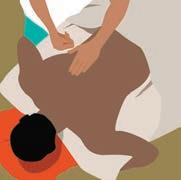
professor and chair of Emory’s Department of Psychiatry and Behavioral Sciences. Twice-weekly Swedish massage therapy was compared with light touch over a six-week period for participants with GAD. Sessions lasted 45 minutes under sameroom conditions. Patient assessments, self-reported and clinician-rated, were done before the initial session and a er each subsequent session.
Researchers found as early as

session ve that individuals who received massages showed greater improvement of anxiety symptoms, as well as a decrease in depression levels. Use of massage therapy to treat patients with physical ailments is well documented, Rapaport says, but more needs to be understood about the biology of massage to determine its possible role in treating anxiety and mood disorders. e study was published in the Journal of Clinical Psychiatry. ■
Corn fields that become high-fructose corn syrup. Wheat and rice stripped of its fiber. Hamburgers and milk shakes.
A new study has found that people who eat a lot of foods derived from the crops most heavily subsidized by the government—wheat, corn, rice, sorghum, soybeans, dairy, and livestock—have a higher risk of diabetes and cardiovascular disease.
It’s not that these foods are all bad in their natural forms. But a large portion of the subsidized commodities are converted into foods on the USDA’s
naughty list: high-fat meat and dairy products, refined grains, high-calorie juices and soft drinks, and processed and packaged foods.
“Our hope is that this study shines a light on the disconnect between federal nutritional recommendations and food commodity subsidies, which may lead to collaborative research and action,” says lead author K.M. Venkat Narayan, professor of epidemiology and medicine and director of the Emory Global Diabetes Research Center. “One potential policy lever may be to
The risks of repeated concussions in football has gotten a lot of attention, but players experience cardiovascular issues as well, found Emory Heart & Vascular Center sports cardiologist Jonathan Kim. In an expert analysis of the heart and vascular health of American football players for the American College of Cardiology, Kim found that retired pro-football players suffer long-term adverse cardiovascular outcomes and may be at higher risk for early hypertension. ■
shift agricultural subsidies toward the production of healthier crops such as fruits and vegetables.”


Eating fewer subsidized foods alone will not eradicate obesity, but people who eat fewer subsidized foods can reduce their risk of obesity.
On average, 56 percent of calories eaten come from subsidized foods, and the higher the percentage, the worse the person’s cardiometabolic health profile. The study is available in the July 5 online edition of JAMA Internal Medicine. ■

broken free and fallen into the uid of the semicircular canals of the inner ear. When that happens, one ear is telling the brain one thing while the other ear is telling it something else, causing the spinning sensation. e feelings of vertigo are triggered by changes in the position of the head—getting up, lying down, and tilting the head back. e symptoms are usually brief, but some people also complain of poor balance and trouble walking for several hours a er a vertigo episode. e condition sometimes clears up on its own.
e clinic uses a maneuver called Hallpike-Dix along with goggles that track eye movement to diagnose BPPV. From there it’s a matter of manipulating the patient’s position, rotating it in such a way that it moves the crystals out of the canals—somewhat akin to the puzzles where you tilt and rotate the game to get little balls to fall into the holes.
Many common causes of dizziness spells and vertigo, if diagnosed correctly, can be treated quickly. Unfortunately, many patients end up seeing four or five doctors before they get a correct diagnosis.
For years, Marguerite Denny got a massage in her Decatur home every week. But one day when she sat up from the massage table, the room started to spin. “It was like all the wood paneling in the den was rushing toward me and my head was swimming on the inside,” says Denny.
For the next several weeks, any time Denny would lie down and get back up, her world would tilt and whirl for several seconds. Happily for Denny, her doctor was quickly able to diagnose her condition— benign paroxysmal positional vertigo, or BPPV—and refer her to the Emory Dizziness and Balance Center. A er a few visits, she was free of the vertigo and remains free today.
BPPV is one of the most common causes of dizziness spells and vertigo. If diagnosed correctly, it can be treated quickly. Unfortunately, many patients end up seeing four or ve doctors before they get a correct diagnosis.
“A lot of doctors don’t know how to diagnose BPPV—they just call it vertigo and prescribe an antihistamine (Antivert) to relieve the symptoms,” says Lisa Heusel-Gillig, a physical therapist at the Dizziness and Balance Center. “But that just decreases the symptoms of dizziness, it doesn’t make it go away.”
BPPV is caused by calcium carbonate crystals that have
“If you know what you are doing, you can treat a person one time and the BPPV is gone,” says Heusel-Gillig. She can also give the patient speci c movements they can do at home once she knows exactly where the particles are.
BPPV is just one of the conditions treated at the Dizziness and Balance Center. Two other common causes of vertigo are migraines and vestibular hypofunction. e former primarily strikes women in the menopausal range and is o en misdiagnosed. at’s because the type of migraine that causes vertigo is not typically accompanied by a headache.
“When the hormones start changing, or when you are under a lot of stress, you can get these spells of vertigo,” says Heusel-Gillig. “ ey may only last a few seconds, but they can really freak people out. And most of the people who have this type of migraine, myself included, had car sickness as a child.”
Vestibular hypofunction results from damage to the nerve in the inner ear, o en from a virus. Since the nerve does not grow back, patients will feel o -balance and dizzy until they get vestibular therapy. Within four to six weeks of therapy, however, patients typically recover almost fully.
e Emory Dizziness and Balance Center is in Executive Park and Emory Midtown and is sta ed by Heusel-Gillig, neurologist Ja ar Khan, and a vestibular testing technician. Patients must receive a referral from a physician.—Martha McKenzie
In late July, the first infant with Zikarelated microcephaly in New York City was born, one of more than a dozen babies with the Zika-related birth defect to be born so far in the United States. All were born to mothers thought to have been infected while traveling to one of 50-plus countries where Zika is endemic.
Every day, new cases of Zika are being diagnosed in pregnant women in the US and abroad.
e acceleration of the Zika epidemic has inspired new studies on the virus’s transmission, symptoms, and possible treatment. One, being conducted by Emory,
Baylor, and Saint Louis University School of Medicine, involves collecting blood samples from 200 volunteers who have suspected or con rmed cases of Zika. is research group, supported by a $4 million research grant by the NIH, hopes the blood samples will help determine human immune response to Zika virus, thereby accelerating the development of a diagnostic test, infection control measures, and eventually, a vaccine. Additionally, researchers at the Emory Vaccine Center and in ailand discovered a possible caveat to treating this epidemic. Zika virus is genetically and geographically similar

As of August 24, the CDC reported 2,487 travel-related cases of Zika in the U.S., and 29 locally acquired cases. In Georgia, more than 50 cases have been reported. Infectious disease physician Henry Wu diagnosed four of these cases at the TravelWell clinic at Emory University Hospital Midtown, in consultation with the Georgia Department of Public Health.
Wu has worked with Emory ob/ gyn physicians on procedures to test patients for the virus and is collaborating with the Emory Vaccine Center’s Hope Clinic to study the disease. “For most, the risk of complications is low,” says Wu. “But this is the rst disease to be linked to birth defects in 50 years.
at’s a big deal.”

Just 20 percent of people bitten by a mosquito carrying the virus develop
symptoms—fever, rash, joint pain, and conjunctivitis—which last for about a week. Zika, with its links to microcephaly and Guillain-Barré syndrome, is much more worrisome for those expecting a baby or planning to conceive.
In August, the CDC issued an unprecedented travel warning advising pregnant women and their partners not to travel to parts of Miami a er more than a dozen people were infected with the virus by local mosquitoes.
“We’ve gotten a lot of calls from women and men who have questions about sexual transmission of the virus and when it’s safe to have sex or conceive,” says TravelWell physician Phyllis Kozarsky. She recommends reviewing CDC guidelines for personal protection, at www.cdc.gov/zika/prevention.
“Zika hits closer to home because




to dengue virus. Preliminary research suggests that immunity and exposure to dengue virus may impact an individual’s immune response to Zika. ere are four strains of dengue virus. Exploratory laboratory tests are demonstrating that while one strain of dengue virus may give individuals antibodies with the abilities to neutralize Zika, another may worsen Zika’s e ect.
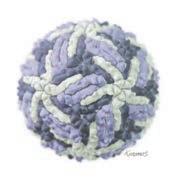
Other Zika studies at Emory include determining how the virus may enter the placenta, how it a ects the brain, and what serotype causes the virus. e NIH recently launched a Zika vaccine clinical trial that the Emory Vaccine Center will be participating in.—Aspen Ono 18C
of the potential to a ect many families right here. People ask, ‘Why weren’t we prepared for this?’ e truth is we need better public health infrastructure to deal with emerging and re-emerging diseases so we can be better prepared,” says Kozarsky.—Pam Auchmutey

‘‘We are, at least from the standpoint of DNA, more microbial than human. That’s a phenomenal insight and one that we have to take seriously when we think about human development. . . . It has enormous implications for the sense of self.’’
—Tom Insel, former director of the NIMH and the Center for Behavioral Neuroscience at Emory, in the The New York Timesach of us is a mobile ecosystem teeming with trillions of living organisms.

ey live on us and inside us, surround us like an invisible cloud, maintain and sustain us, ignore us, occasionally attack and kill us, and, ultimately, de ne us.
e human microbiome is made up of bacteria, fungi, viruses, and the like, and they cover every surface of our bodies.
“ ese microbiota are mostly in your gut, but also in your mouth, on your skin, in your lungs,” says Emory biologist Nicole Gerardo. “ ey’re playing critical roles in how you interact with the environment, how you process food, how you ght o pathogens, how you interact with drugs.”
Some of our remarkably fertile microbes are identical to those that live in other humans. But many are a distinct re ection of our individual experiences, shaped by who or what we’ve touched, where we’ve been, what we’ve breathed, and what we’ve consumed.
“Research interest in the human microbiome is exploding now,” says Gerardo, who gave the intro-
ductory presentation at Emory’s rst microbiome symposium in November.
Spurred on by ambitious e orts like the National Institutes of Health’s Human Microbiome Project, such research is demystifying the role of our myriad microbial passengers.
“It’s like we’re entering a new frontier of science, something that was basically ignored by medicine for a long time,” says infectious disease researcher David Weiss, director of Emory’s Antibiotic Resistance Center. “We’re really at the beginning of studying all this, but I do think that in our lifetime, we’ll be able to pee in a cup and monitor our microbiome. Looking at what type of bacteria we have and how resistant or sensitive it is to drugs will be an important part of health care. Most of the bugs we tote around are helpful, but they can also be ticking time bombs.”
In this case, we may be able to someday di use the situation, replacing pathogenic microbes with a friendlier variety.
“ ere’s great promise in manipulating the microbiome, in actually changing it,” says geneticist Michael Zwick. “Actually, it’s already happening.”
BY Jerry Grillo n ILLUSTRATIONS BY Giulia GhiginiThe countless microorganisms that live inside us—especially in our gut—are more important than we realized as symbiotic partners in health. They are also quirky little characters that have turf wars, can spread with a kiss, and may restore wellness when shared. Your microbiome, in many ways, is the essence of you.
Pathologist Colleen Kra has grown used to the responses she gets in social gatherings when she brings up her work with fecal transplantation, in which gut microbes are transferred from one person to another.
“It’s been a great conversation starter at parties when people ask me what I do or what my research interests are,” says Kra , an infectious disease physician who launched Emory’s fecal transplant program in 2012. “But I don’t get as much laughter or as many funny looks now as I did back then.”
A growing awareness of the microbiome’s in uence is re ected in record sales for probiotics—friendly bacteria used as a form of preventive medicine that now show up in everything from yogurt to over-the-counter supplements.
While probiotics can be used by healthy folks to restore good bacteria a er a bout of antibiotics, patients who develop the potentially fatal bowel infection Clostridium di cile (C. di ) may require a fecal microbiota transplant.
Kra and gastroenterologist Tanvi Dhere are co-directors of Emory’s Microbiota Restoration Program. ey lead a team that has performed more than 230 fecal transplants with an overall success rate of 98 percent.
Kra recruits donors and maintains a stool bank, while Dhere performs and manages fecal transplant procedures.

A small fecal sample is taken from a healthy donor, processed in a lab, and transplanted into the patient’s colon,
where the new, healthy bacteria can restore microbiotic balance to a compromised digestive system.
“Your gut gets disrupted and barren from antibiotic use,” says Kra , the granddaughter of two farm families. “So I think of a garden analogy, or a pasture that gets decimated in winter. When our gut is decimated, using more antibiotics to treat the bad bacteria doesn’t work.”
A fecal transplant remains the

About 1,000 species of microorganisms jockey for position in our gut at any one time. Mostly, they’re cooperative and helpful bugs, protecting us from pathogens with their sheer mass— there’s hardly room for anything else in such a crowded community. ey boost our immune system, help keep us t and slim, and typically exert their microbial bene cence throughout the body.
Sometimes, however, a normally harmless microbe can run amok if your system gets thrown out of whack by, say, an antibiotic or steroid. at’s what happened to Gail Swanson.
About a week a er returning home to Atlanta following a mission trip to Peru in June 2014, and following two trips to the emergency room with what initially was diagnosed as renal failure, Swanson was told she had C. di . She was prescribed antibiotics and the infection subsided for a while and then returned— the beginning of a wretched cycle in Swanson’s life.
gold standard when it comes to treating C. diff , which affects more than 450,000 people every year, killing about 29,000.
“A lot of my friends take probiotics, but that’s not as e cacious as poop, which is hundreds of thousands of times more e ective than typical probiotics,” Kra says. “Poop is the ultimate probiotic.”
“I was as sick as could be and thought, ‘What hope do I have?’ It felt like I was going to be like this for the rest of my life, weak and tired,” says Swanson.
Her gastroenterologist told her the infection would probably go away on its own. And it seemed to, a er four months of struggle.
But last summer, following a course of antibiotics to treat a sinus infection, C. di returned. Her physician, as many do, prescribed more antibiotics, “and I wound up in the ER with C. di yet
“Your gut gets disrupted and barren from antibiotic use,” says Colleen Kraft, the granddaughter of two farm families. “I think of a garden analogy, or a pasture that gets decimated in winter. When our gut is decimated, using more antibiotics to treat the bad bacteria doesn’t work.”
again,” she says. “ at’s when I decided that I had to nd another option.”
A Google search led her to information about fecal transplants. “I thought, ‘Yuck,’ but I was desperate,” Swanson says.
She was enrolled in a clinical trial at Emory testing an alternative to traditional fecal transplants—a “poop pill” designed to tease out the speci c bacterial spores involved in treating C. di . Initially, she was placed in the control group, which received the standard treatment, a powerful and expensive antibiotic called vancomycin.


“It did make me feel almost human again,” says Swanson, who has four daughters and four grandchildren.
But the C. di came back, which was expected. Finally, Swanson was given the real stu . She calls it, “a miracle. Within two days, the C. di was gone, and I was dancing in the streets.”
“ e thing of it is,” she says, “I’ve always su ered a little bit from
depression, but I must have gotten somebody’s happy poop. My whole life is di erent.”
Despite the fact that a fecal transplant is o en so successful, current FDA guidelines require that a patient have several occurrences of C. di before they can receive such a transplant, leaving doctors without many good treatment options.
“To me, it seems a little bit crazy,” says Dhere. “Why subject a patient to that much infectious burden if you already know the chance of a reoccurrence is pretty high?”
So Kra , Dhere, and others are exploring how to extend use of fecal transplants for other patients, using the therapy before C. di takes its toll.
“We’re looking to expand the role of fecal microbiota transplants for other things that are not as severe as C. di , and maybe closer to a rst-line treatment,” says Virginia Sha er, a surgeon on the fecal transplant team.
Sha er is running an open clinical trial to study the use of fecal transplants to treat pouchitis, an in ammatory condition that a ects people who have had a proctocolectomy (removal of part of the colon due to ulcerative colitis).
In a recent article in the American Journal of Infection Control, Kra and colleagues from Emory and the CDC discuss the need for a microbiome disruption index to inform decisions on antibiotic stewardship and interventions such as fecal microbiota transplants or oral probiotic capsules.
ey say that measures of microbiome diversity should assess several factors:
n Overall diversity: how much does one type of bacteria dominate
n Presence of “bad guys,” like C. di
n Presence of “keystone” species that prevent takeover by bad microbes
n Presence of bacteria thought to be bene cial or protective.
Microbiome research is one of the fastest growing elds in the biomedical arena largely because the tools to do it—such as DNA-sequencing technologies and computational resources—have gotten so good. “ ese powerful technologies have come about as a consequence of the human genome project,” says Frank Anania, director of Emory’s Digestive Diseases Division, who is researching the relationship between a high-fat diet, intestinal microbiota, and non-alcoholic fatty liver disease.
Zwick, scienti c director of Emory’s genomics and computational core facilities, has a good overview of the diversity of microbiome research being conducted across the university.
“Genomics is the central place where microbiomic sequencing is accomplished. We’re generating a massive amount of data for investigators,” he says. “We also have a computational core, where the data is analyzed and pipelines are identi ed. And we’re developing a Biostatistics Consulting Center, with a biostatistical cadre for interpretation of this data.”

A recent addition to Emory’s microbiome research is the gnotobiotic mouse facility, developed last year by gastroenterologist Rheinallt Jones for his studies into the microbiome’s in uence on host physiology.
e average mouse, like the average human, is home to trillions of bacteria and viruses. But a mouse in a gnotobiotic facility has no germs on its skin, in its nostrils, or in its gut. Its food, water, and bedding is heated to more than 100°C to kill bacteria and viruses before being delivered to the mouse’s cage through a sterile system.
“ is facility provides a germ-free environment, so you can study the biology of whole organisms with a complete absence of bacteria,” says pathologist Andrew Neish. His research looks at
how bacteria contribute to intestinal epithelial integrity and healing.
In the gnotobiotic facility, the microbiome of test animals can be manipulated and de ned by researchers.
Jennifer Mulle, a genetic epidemiologist, has studied the microbiome’s in uence on neural development: in other words, the gut’s in uence on the brain. “It’s the most amazing thing ever,” she says. “It really suggests that the microbiome is an essential component of behavior.”
more than 250 people, and Emory plans on making it a semi-annual event, says Mulle, the symposium’s organizer.
e Emory Microbiome Group, formed by Kra , Neish, and microbial genomics expert Tim Read, is thriving, and research studies are taking place across the university. For example, Joanne Goldberg is examining the role of the lung microbiome in cystic brosis-related diabetes. “For the longest time, the lung was considered sterile—you didn’t think of microbes being there at all,” says Goldberg. “But now we appreciate that it actually is a dynamic environment.”
Other studies are exploring the role of the microbiome in ALS, bone loss, cancer treatment outcomes, Down syndrome, and epithelial wound repair.
e most ambitious and expansive microbiome research e ort so far brought together investigators from the medical, nursing, and public health schools, as well as Emory College and the CDC, for a set of research projects that yielded the creation of the Southeast’s rst children’s environmental health center.
In her paper, “ e Gut Microbiome: A New Frontier in Autism Research,” Mulle writes about the Human Microbiome Project, clarifying the initiative’s ultimate goal: “To understand how this ‘forgotten organ’ functions to establish and maintain a healthy state, and whether the microbiome can be manipulated to favor long-term desirable health outcomes.”
Interest in the group and microbiome research at Emory spiked a er November’s two-day microbiome symposium, which brought in experts from Georgia Tech, the CDC, Baylor College of Medicine, University of Michigan, UCLA, Stanford, and Virginia Commonwealth University. e event drew
e Center for Children’s Health, the Environment, the Microbiome, and Metabolomics (C-CHEM2), formed last fall, is one of 25 children’s environmental health centers in the U.S. and the only one focused on the microbiome.
e center grew out of the maternal microbiome project started a few years ago by Emory nursing researchers Elizabeth Corwin and Anne Dunlop. e ve-year study seeks to determine how biological and environmental factors in uence the microbiome of African American women during pregnancy, and whether disruption of the microbiome causes preterm birth.
African American women have a 1.5 times higher risk of preterm birth than Caucasian women. Nearly 300 women have enrolled so far in the study, which involves the analysis of the participants’
microbiota to determine what patterns are linked to preterm births.


An infant microbiome study, co-led by Corwin and Emory psychologist Patricia Brennan, involves a subset of moms from the maternal microbiome project and explores how chronic maternal stress and disadvantage may in uence an infant’s microbiome. “We want to understand the role of the microbiome in the gut-brain axis,” says Corwin, of the biochemical signaling between the digestive tract and the nervous system.
ey also want to know more about childhood obesity. “We know that babies born by cesarean section have a di erent gut microbiome than vaginally born babies, and we know that kids born by cesarean have an increased risk of obesity,” says Corwin. “We think that di erences in the microbiome may be playing a role.”
Diversity rules
ese burgeoning studies are just the beginning of exploring the mysterious microscopic worlds within us and the organisms that dwell there.

For years, scientists who studied the microbiome estimated that bacteria outnumbered human cells 10-to-1. Recent calculations put the ratio at something closer to 1.3-to-1.
But this doesn’t reduce the huge impact the microbiome has on human health.
“I don’t think the number of microbial cells is as important as the diversity of those microbes,” Gerardo says. “ ere are large microbial communities engaging in a tremendous amount of warfare inside of us, competing for and claiming space. Our microbiome helps de ne who we are, and we’re getting to a point where more and more people are realizing that they have an important partnership with their microbes. A healthy, diverse microbiome is a wonderful thing.” ■



 BY Sylvia Wrobel
BY Sylvia Wrobel
On a sweltering summer evening, a group of six women gather around a candlelit table covered with sparkling glasses, deviled eggs, peach salad, North Carolina trout, and roasted sweet potatoes.
Despite having just met, the women—all in their early 50s—are talking like old friends, sharing stories of night sweats, crying jags, hot ashes, and brain fog. Laughter oats through the humid air, ampli ed by the instant camaraderie that common frustrations can forge.
“I just can’t run as far or fast as I used to,” says one woman, an avid runner whose mile speed has rapidly diminished. “It happened so dramatically and quickly.”
“Nights are the worst for my hot ashes,” she adds. “I have a fan and a space heater next to each other in the bedroom.”
“A er a few nights of no sleep, I will cry about anything,” says another. No matter the individual symptoms, the women’s questions centered on a common theme: How long does this last?

“Well, usually two to ve years for the most severe symptoms, but up to 12 years,” says obstetrician/gynecologist Mary Dolan, one of a handful of certi ed menopause practitioners in Georgia. “And technically forever, since what we are talking about is a lack of periods and a diminishing of estrogen.”
A lot is happening during this time in a woman’s life, says Dolan, from physical changes to emotions surrounding children leaving home and caring for aging parents. Many doctors and even specialists are not trained in how to treat women during this phase. “Other health concerns, such as heart conditions or breast cancer, tend to get more attention,” she says. “A er all, you don’t die from menopause.”

But how you deal with issues that arise during this hormonal shi can in uence your physical and mental health over the long run, impacting everything from bone density to cardiovascular conditions.
at’s why a place where practitioners are well versed in women’s health, midlife challenges, and the latest e ective therapies for aging well is vital to treating this target demographic, says Dolan, director of the new Emory Midlife and Menopause Center. Located on the seventh oor of the Doctor’s Building at Emory Saint Joseph’s Hospital, the clinic is a large airy space with one wall overlooking the Atlanta skyline. Clinics specializing in women’s health during midlife exist at just a few other academic health centers— Harvard, UC San Diego, Mayo.
Ira Horowitz, head of the Emory Women’s Center (of which the new clinic is a part), says that historically, women going through menopause have been overlooked by the medical establishment. “Even obstetrician-gynecologists can focus too much on a woman’s fertile years, as opposed to her whole lifespan,” he says. “Understanding a woman’s midlife and menopausal needs will be more and more important as our population ages.”
Fi y-one is the average age when women have their nal menstrual period. But Dolan, director of the Midlife and Menopause Center, says she and her colleagues are concerned about “meno-


pause, the big picture”—what happens to women in the years before, during, and a er that last period.
Not your mother’s “change of life”
Dolan sees 50 to 60 patients a week. e typical patient is in her mid-40s or early 50s, and experiencing problems related to the changes of perimenopause.
For some, menopause happened suddenly, following surgical removal of the ovaries, certain forms of chemotherapy, or other medical conditions a ecting estrogen production. Others experienced classic perimenopausal symptoms— abnormal periods, hot ashes, trouble sleeping, mood swings—leading up to their last period. And some thought menopause was behind them, only to nd themselves facing recurring urinary tract infections, vaginal pain, or sexual problems.
Many of Dolan’s patients are seeking a second opinion and have questions about hormone replacement therapy (HRT), which lost popularity a er a major study showed that it increased women’s susceptibility to some serious diseases and risks. Other research, however, has shown that if the right hormones are used in the correct way, they can still be of bene t to some women.
Dolan calls the years around menopause “a good time for women to pause, focus on themselves—sometimes for the rst time in years—and take stock of what they need to do to maximize their health and well-being. Our job is to help them do that.”
e team develops a personalized treatment plan for each woman coming into the center, based on her initial evaluation.
is includes:
A SYMPTOM AND HEALTH RISK ASSESSMENT
Evaluating and discussing appropriate treatment of menopausal symptoms, from hot ashes to mood changes to sexual problems such as decreased libido, diminished genital sensitivity,
vaginal pain, or di culty achieving orgasm.
DEALING WITH RISKS
Gauging aging and menopause-related hormonal changes, primarily through:
n a breast exam, referral for mammograms and other imaging modalities; prevention strategies for women at high risk of breast cancer, and gynecologic care for breast cancer survivors
n osteoporosis and bone density testing
n referrals, as needed, for colon cancer screening
n screening for pelvic organ prolapse, urinary incontinence, overactive
“Women with depression or bipolar disorder sometimes hit menopause and everything goes haywire. e medicines and the doses they were taking aren’t working anymore,” she says.
Especially important, says Dolan, is the collaboration with the Emory Women’s Heart Center, since cardiovascular disease remains the No. 1 killer of women in the United States, with risk factors increasing a er menopause.
Hormonal changes can lead to loss of bone and muscle mass, digestive issues, and weight gain. Average gain is ve pounds, but many women gain more.
bladder, and other problems, which are then treated by a urogynecologist on the Midlife and Menopause team.
BRINGING IN OTHER SPECIALISTS AS NEEDED While the center’s core physicians— Dolan, Taniqua Miller, and Penny Castellano—are all gynecologists with special interest and training in menopause, the Midlife and Menopause Center is connected to a range of specialists for comprehensive care who see patients at the center on a regular basis. For example, gynecologic oncologists see women with (or at high risk for) ovarian and uterine cancers. Endocrinologists see women with excessive hair growth or loss or thyroid disorders. Gastroenterologists provide colon cancer screenings and treat irritable bowel or gluten sensitivity. Rheumatologists see patients for autoimmune conditions that can develop. Neurologists help with insomnia or migraines. Psychiatrists evaluate and treat severe mood swings or depression. In turn, they sometimes refer their patients to Dolan.
“Fat redistribution, o en to the belly, is common,” Dolan says. A woman’s caloric needs go down by some 500 calories a er menopause, she says, but simply lowering caloric intake isn’t a good idea without taking into account other changing nutritional needs, such as more calcium for bone and teeth health.
When it comes to menopause-related symptoms, Dolan and her colleagues have an array of treatments at their disposal. Each is personalized, taking into account a patient’s symptoms, age, history, and preferences. Each is evidence-based, relying on research with large numbers of people similar to the patient. And yes, some of those treatments involve estrogen.
FDA-approved estrogen remains the single most e ective treatment for hot ashes, says Dolan, but she understands why many women ask for an assurance that the bene ts outweigh the risks. ey
Hormonal changes can lead to loss of bone and muscle mass, digestive issues, and weight gain. Average gain is five pounds, but many women gain more.
Menopause is official when a woman has not had a period for 12 consecutive months.
Median age of a woman’s last period is 51
Perimenopause usually lasts from 2 to 5 years.
1 in 4 perimenopausal women is still ovulating and at risk for pregnancy.
3 in 4 perimenopausal women report hot flashes or night sweats.
Nearly 50% of women experience drying and atrophy of vaginal tissue, which can adversely affect sexual health.
Following menopause, women experience a marked increase in cardiovascular disease, the No.1 killer of women.
Postmenopausal women are 2.7 times more likely to have heart disease than age-matched premenopausal women.
Women over 50 have the greatest risk of developing osteoporosis.
Estrogen deficiency causes 75% or more of the bone loss in postmenopausal women, placing them at increased risk for bone fracture.
Emory’s ob/gyn department has 4 faculty members who are NAMS (North American Menopause Society) Certified Menopause Practitioners: Drs. Mary Dolan, Penny Castellano, Victoria Green, and Taniqua Miller.
may remember that, in 2002, almost six decades a er women began using HRT, results from the large Women’s Health Initiative (WHI) study showed that study participants taking estrogen and progesterone did lower their risk for hip fracture and colon cancer, but unexpectedly, they also showed a small but statistically signi cant increase in the risk of coronary heart disease, stroke, blood clots, and breast cancer.
Women using only estrogen had a lower risk of coronary heart disease, breast cancer, and hip fracture, but a slightly higher risk of stroke and embolism.
Use of systemic hormone therapy dropped by 80 percent almost overnight. Women were le confused and anxious. Nonprescription treatments
used—that the therapy works best and with fewer risks when begun within six years of menopause. “In general, starting earlier is better than starting later,” Dolan says.
anks to a number of studies that took age, timing, and type of hormone into account, leading medical groups devoted to menopausal medicine now recommend systemic hormone therapy for women with moderate to severe hot ashes and with no contraindications to its use. Today’s view, says Dolan, is that HRT is safe and bene cial when the right formulation is given to the right woman through the right delivery system, beginning and ending at the right time.
Women who begin HRT within six years of menopause also show less
ourished—some useful, some closer to snake oil remedies.
Today, estrogen replacement is back on the table, in part because of a closer look at the WHI study. As one of the original investigators recently wrote in the New England Journal of Medicine, the ndings among the older women who participated in the WHI study are “now being used inappropriately in making decisions about treatment for women in their 40s and 50s.”
e WHI study was designed to assess the risks and bene ts of long-term hormone therapy for prevention of chronic disease in women ages 50 to 79. Many of the women in the study (average age, 63) were well past menopause when they began hormone replacement for the rst time.
Newer studies would show that this was not the way HRT should be
plaque buildup, indicating lowered risk for atherosclerosis.
If estrogen therapy is started 10 or more years a er menopause, this benet is not seen.
How long the therapy continues also matters, says Dolan. In general, ve years of use does not appear to increase the risk for breast cancer.
Some women take supplements for decades with no ill e ects. “I have some patients who are 80 and still on hormones,” she says.
What Dolan recommends most o en for HRT are natural FDA-approved hormones, manufactured to be chemically identical to hormones produced in a woman’s body, primarily by the ovaries, during the reproductive years.
She uses the lowest dose estrogen (estradiol) that will successfully relieve a woman’s hot ashes and other
Estrogen remains the single most effective treatment for hot flashes, says Dolan, but she understands why many women ask for assurance that benefits outweigh risks.
Mary Dolan (below), director of the Emory Midlife and Menopause Center, became focused on menopause—especially non-estrogen options for its treatment—during a fellowship as an Epidemic Intelligence Service o cer at the CDC, when she saw the e ects of surgical or chemotherapy-induced menopause on young women with breast cancer.

ALL ABOUT THE HORMONES: During perimenopause, hormonal levels fluctuate. Fairly minor and temporary drops in estrogen are responsible for the infamous hot flashes. Other hormones produced by the ovaries also change: progesterone (which prepares the lining of the uterus for a fertilized egg) and testosterone (sometimes called the “male hormone” but important to women’s sexual health as well). As these levels fluctuate, menstrual periods become erratic: longer, shorter, heavier, lighter, more or less frequent. Fertility goes down but does not necessarily go away until after a woman’s last period.


THE DOWN SIDE: Changing hormones or side effects like sleep deprivation can cause “mental fog” or memory lapses, and it becomes more difficult to concentrate or multi-task. Some women experience severe mood swings or depression for the first time. Women with a history of postpartum depression or severe pre-menstrual syndrome (PMS) may have a more difficult transition through menopause. Those with pre-existing depression or other psychiatric disorders may find that once-effective medications no longer work as well due to hormonal changes. Changes that occur with menopause include a higher risk of cardiovascular disease and rises in blood pressure, LD cholesterol (the bad one), and triglycerides. Postmenopausal women also have a significantly higher incidence of breast, ovarian, and other gynecologic cancers.
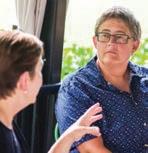
FOR MORE: Some of the useful fact sheets given to patients at the Midlife and Menopause Center are available at www.menopause.org, the website of the North American Menopause Society (NAMS).

The impact of estrogen on brain function is well known to scientists—and to women who experience changes in memory, mood, and sexual desire, all related to falling estrogen levels. Estrogen replacement can ease these problems but also can have unwanted side effects. But what if estrogen could be delivered directly to the brain, bypassing other parts of the body?
A study at the Yerkes National Primate Research Center is testing a way to do just that.

Menopause experts at North Texas Health Sciences Center and the University of Maryland recently synthesized a compound that binds together estradiol (biologically identical to naturally occurring estrogen) and the antioxidant quinol. When injected into mice whose ovaries had been removed, the compound traveled throughout the body, the estrogen apparently unrecognized by the body’s many estrogen receptors, until it reached the brain. There, an enzyme found only in the brain stripped away the quinol, liberating the estradiol and allowing it to bind to the receptors and get to work. Estrogen-related changes could be seen in the mice’s brains, with no evidence of estradiol anywhere else.
For the next research step, the team called Emory neuroendocrinologist Kim Wallen. He and neuroscientist Mark Wilson have spent years studying hormonal changes in rhesus monkeys living in a large social colony at Yerkes. They began testing the compound on seven monkeys who’d had their ovaries removed. Beyond the precise targeting of the brain, Wallen is interested to see if it will counteract the fact that sexually active rhesus females lose all interest in sex as soon as their ovaries are removed and estrogen levels plummet. Can this interest be rekindled by the brain boost? Stay tuned for the results. ■
menopause symptoms, combining the estradiol with enough progesterone to protect the uterus from cancer.
Estradiol is available as an oral tablet, as is progesterone. e FDA also has approved estradiol delivered by transdermal patches, creams, and sprays. Vaginal dryness and pain can be treated with creams or tablets placed directly in the vagina or with vaginal rings that stay in place, delivering low-dose estrogen. While this localized approach can be very successful for vaginal dryness and pain, it does not help combat hot ashes.
For women who prefer not to use estrogen or for whom estrogen is contraindicated—those with a strong family history of breast cancer, for example—a nonhormone drug, Brisdelle (low-dose paroxetine, or Paxil), is approved by the FDA for hot ashes. Other drugs approved by the FDA for depression, epilepsy, migraine, and nerve pain also work better than placebos in treating hot ashes and other symptoms.
Dolan’s team also has advice on simple lifestyle changes that can help: avoiding alcohol or ca eine; lowering stress through meditation, yoga, or massage; slow, deep, abdominal breathing, in through the nose and out through the mouth; frozen cold packs (or a bag of frozen peas) under the pillow, turning for coolness.
Studies have found that one or two servings of soy foods daily help reduce hot ashes for some women, Dolan says, but cautions that many products sold over the counter as menopause aids are not FDA-approved and little is known about their safety.
A parallel goal of the Emory center is to train the next generation of physicians to be aware and sensitive to these issues and therapies, Dolan says, since women’s health at midlife and beyond
has been too o en ignored by clinical medicine in the past.
Patients also have the opportunity to participate in ongoing Emory research, such as a current study looking at changes in the vaginal microbiome (the trillions of microbes that live on and in the body) during menopause.
As night begins to fall, the women at the dinner gather closer to the candles and start asking Dolan more personal questions.
“Do men have a version of menopause?” one asks.
No, replies Dolan, but there are aging issues for both genders.
“If you take HRT, when you go o the hormones, do you have to go through menopause all over again?”
Not really, Dolan replies. “Since you can taper down, and let your body adjust, it won’t be nearly as severe.”
What can you do about symptoms like dryness or thinning of the vagina walls?
Medications can help, Dolan says, as well as special lubricants. Staying sexually active is not only possible but recommended, she adds.
“Use it or lose it,” someone jokes. e group asks if there are proven methods for reactivating a reduced libido.
“Bibliotherapy has been suggested,” says Dolan.
“So, Fi y Shades of Grey?” one woman suggests, to laughter.
“Whatever works for you,” Dolan says.
And with that, the women—amid hugs and goodbyes—walk o into the sultry night, sweaty but hopeful, ready to take on whatever comes next. ■
Women’s health at midlife and beyond has been too often ignored by clinical medicine in the past.
What used to be called “blood poisoning” is still very much with us. More deadly than a heart attack, sepsis strikes more than 1 million Americans a year. Medical teams are fighting back with broader awareness, faster recognition, and immediate treatment.
In the summer of 2010, electrical engineer Ketan Thanki was in a specialized intensive care unit at Emory University Hospital, waiting for a heart transplant. One night, he developed signs of an infection. Because he was sound asleep, he had no idea how dangerous his situation had become. ankfully, somebody else did.


“ e night nurse woke me up and said I had both a fever of 104 and blood pressure of 60 over 30,” he says. “She said she needed to start me on intravenous antibiotics right away.”

e nurse had recognized the symptoms of sepsis, an extreme response to infection that can result in organ damage, organ failure, and death. anki’s low blood pressure was a sign that in ammation within his body was intensifying and a ecting his circulation. e mortality risk for someone who develops sepsis is 15 to 30 percent, higher than the risk for someone who has a heart attack. Sepsis is a leading cause of death in American hospitals and the most expensive condition treated there, accounting for more than $20 billion in health care costs annually.
Due to anki’s prompt treatment with antibiotics, his infection resolved within a few days and he was able to get the heart transplant he needed. His experience makes detecting sepsis sound pretty straightforward, yet it sometimes goes unrecognized by medical caregivers until it is too late to intervene e ectively.
Sepsis stems from an infection, which then leads to a life-threatening abnormal response of the body to the infection. Pneumonia, urinary tract infections, appendicitis, or an infected scrape could all lead to sepsis.
Symptoms include: shivering, fever or feeling very cold, extreme pain or discomfort, clammy or sweaty skin, confusion or disorientation, shortness of breath, rapid breathing, and high heart rate.
Part of the problem in recognizing sepsis, doctors say, is that it can a ect all types of people, and its symptoms don’t focus on one part of the body. A
sepsis patient can be a young athlete, an elderly person in a nursing home, or a patient in the hospital being treated for something else. “ e biggest risk factor is already being sick,” says Craig Coopersmith, an Emory critical care specialist who, with colleague Greg
ness of the threat, it has proven quite popular: At nearly 1.3 million views, it is currently the h most-viewed JAMA paper ever.
“If someone’s having a heart attack or a stroke, what’s happening is easier to grasp,” says Coopersmith. “Everyone knows that treatment is urgent in that situation.”
Sepsis response, he says, is equally urgent.
In August, the CDC declared sepsis a medical emergency, and reported that about 72 percent of patients with this fast-moving illness had recently been seen by doctors and nurses, representing missed opportunities to catch it.
Consider young Rory Staunton. In 2012, 12-year old Rory cut his arm diving for a basketball at school in New York City. e next day, he went to the emergency department in a hospital there, vomiting and complaining of leg pain. At that time, doctors thought Rory had a simple u-like illness. He was given uids, advised to take Tylenol, and sent home. A er he le the hospital, results from lab tests showed signs of severe infection in his blood.
Martin, was part of an international e ort to rede ne sepsis.
e new de nition, published in the Journal of the American Medical Association, clari es terms and clinical criteria to prompt quicker recognition and treatment.
And, perhaps due to rising aware-
ree days later, he died of sepsis, despite strenuous e orts to save him.
To avoid such tragedies, academic medical centers like Emory have taken steps toward improving recognition and starting immediate treatment.
Emory is reshaping how its sepsis care takes place. at means reorganizing teams so that tests and supplies

can be delivered more quickly, getting doctors to agree on a standard treatment regimen, and putting into place an “electronic trigger.”
e trigger is a computerized version of the perceptive nurse who woke Ketan anki up in the middle of the night. Due to anki’s pending transplant, he was being monitored very closely—his blood was drawn twice a day, and information was being provided to his medical team via a Swan Ganz catheter in his heart. So when anki developed signs of infection, hospital sta detected it right away.
e purpose of the electronic trigger for sepsis is to broaden that monitoring so that patients all over the hospital, not just in an intensive care unit, can be caught in its safety net.
“Before, patients in the ICU were screened every 12 hours, but many opportunities were missed,” says Mary Still, a clinical nurse specialist in the surgical transplant ICU. Still, along with colleague Carolyn Holder, a clinical nurse specialist in the medical ICU, has led the charge on early recognition and treatment of sepsis.
e trigger checks patients’ vital signs. If they indicate a potential problem, it sends an alert to the nurse on duty to evaluate the patient for signs of infection or impaired organ function. is is nuts and bolts stu and doesn’t involve introducing new medicines or procedures that doctors or nurses are unfamiliar with. A er many clinical studies, the only measures proven to help patients ght sepsis are antibiotics and uid replenishment.
“ e things that we need to do haven’t changed,” says critical care quality expert David Murphy. “We want to reduce the number of clicks and steps needed to do the right thing.”
As mundane as the phrases “electronic medical record” or “computerized provider order entry” may sound,
this is an area where harnessing their power is expected to make a signi cant di erence.
“Getting the orders computerized, that was huge. It was all on paper before,” Still says. “I didn’t realize the impact of culture and silos of information until I got involved in this process.”
Emory has customized its approach to minimize “alert fatigue,” Murphy says, which is when medical teams are asked to pay attention to so many alarms, alerts, beeps, and buzzes they get overwhelmed.
e Centers for Medicare and Medicaid Services requires that hospitals collect data on “bundles” that specify what medical teams are supposed to do for patients with sepsis within three and six hours a er time of presentation.
“A challenge was persuading doctors to view the sepsis bundles as ‘set menus’ rather than ‘a la carte,’ ” Still says.
e three-hour bundle calls for a relatively simple set of actions, which Coopersmith and other sepsis experts have been promoting:
1 Measure lactate, an indicator of sepsis.
2 Test for bacteria in the blood.
3 Administer broad-spectrum antibiotics.
4 Give uids if blood pressure is low or lactate is high.
A er the trigger was implemented last year, sepsis protocol adherence increased substantially at Emory’s four hospitals, to 77 percent.
Bene ts have included a reduction in patient length of stay and more discharges home instead of to a rehab or skilled nursing facility.
“I think these measures are going to save thousands of lives, nationwide,” Coopersmith says.
Emory Healthcare team members with an interest in sepsis care have been meeting regularly to discuss tactics and results.
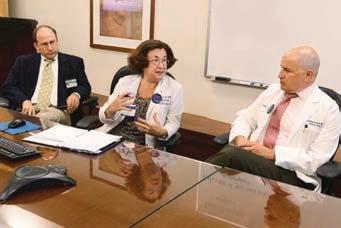
When they started getting everybody together, they realized there were six di erent protocols for sepsis treatment on Cli on Road alone, between the emergency department, the ICUs, and the wards.
“It took a year to get everyone on the same page,” says Jonathan Sevransky, who oversees the medical intensive
care unit at Emory University Hospital. “Even if we have computers, we can’t forget about personal communication.”
For process re-engineering of this kind, physicians, nurses, pharmacists, technicians, and others must work together. “We have to persuade people that these are important guidelines to follow and give them data on their performance. We haven’t shoved anything down people’s throats—it’s more, ‘Can you live with this?’ ”
Sepsis survivors are an important part of the prevention and recognition e orts. A er Ketan anki’s recovery from sepsis, and heart transplant, he became a patient-family adviser at Emory Healthcare.

Volunteer advisers are current or former Emory patients or family members who help improve care by weighing in on everything from policy development to hospital design. Several have taken a special interest in sepsis care, preparing educational materials on infection prevention and on how to recognize sepsis at home.
It’s all about increasing awareness, says Sevransky. “I tell our trainees, if I’m the one to diagnose sepsis, we failed. My job is to make sure other people do it instead of me.” ■
Because of vaccinations and infections, your immune system accumulates memory T cells, which enable it to respond effectively to bacteria or viruses it has seen before. Not so with mice kept in clean laboratory facilities. Emory scientists think this difference could help explain why treatments for sepsis that work in mice haven’t had the same success in human clinical trials. “This is an issue we’ve been aware of in transplant immunology for a long time,” says Mandy Ford, scientific director of Emory Transplant Center. “Real-life humans have more memory T cells than the mice that we study.”
Ford has teamed up with Craig Coopersmith to investigate sepsis, a relatively new field for her, and the collaboration has blossomed. Sepsis is like a storm moving through the immune system. Scientists studying sepsis think that it has a hyper-inflammatory phase, and a phase of impaired immune function afterward. The ensuing paralysis leaves patients unable to fight off secondary infections. In late-stage sepsis patients, viruses that the immune system usually keeps under control, such as Epstein-Barr and cytomegalovirus, emerge from hiding. The situation resembles that of kidney transplant patients, who are taking drugs to prevent rejection of their new organ, Ford says. It was recently discovered that sepsis preferentially depletes some types of memory T cells in mice. Because T cells usually keep latent viruses in check, this may explain why the viruses are reactivated after sepsis, she says.
Ford and her team have been focusing on a molecule called 2B4, which is found on memory T cells, regulates their function, and is more abundant during sepsis.
In a mouse model of septic infection, 85 percent of normal mice usually die, but 13 percent of mice lacking 2B4 died. This suggests that a treatment that could block 2B4 from functioning could provide a survival benefit. Ford’s team is poised to try 2B4 experiments with “memory mice,” which have cleared several infections and thus have immune systems that resemble those of adult humans more closely.

The observations of impaired immune function in late-stage sepsis have led to proposals to try immunotherapy drugs, which wake up exhausted T cells to fight cancer. A clinical trial of one such agent is under way at Emory. “It’s the opposite of what everybody has been trying for the past 30 years, but it does make sense in light of these recent findings,” Ford says.
In addition, Ford and Coopersmith have been investigating the possibility that not every sepsis patient should be treated the same. The presence of cancer, for example, may so distort the immune system that anti-sepsis treatments that have proven beneficial in previously healthy mice become harmful. Chronic alcohol ingestion may have similar distorting effects.
“We’re adding in comorbidities that reflect the human condition,” Coopersmith says. ■
If you’ve been touched by a story or stories in this issue of Emory Medicine, these windows can open up ways for you to turn your inspiration into action. Here you’ll see how you can invest in the people, places, and programs you’re reading about. Gifts to Emory produce powerful, lasting returns: they help create knowledge, advance research, strengthen communities, improve health, and much more.


As life expectancy rises, many women will spend 40 percent or more of their lives after menopause. The Emory Midlife and Menopause Medical Center helps women navigate this transition and make their postmenopausal lives long and healthy. Emory is among a small number of elite academic medical centers in the nation—and the only one in the Southeast—with a program focused on menopause and how it affects women’s health.
To find out more, contact Gabrielle Stearns, director of development, at 404.727.2512 or gabrielle.stearns@emory.edu.
For more than 40 years, Emory has served as a hub for Georgia families seeking the latest discoveries in hemophilia treatment and benign blood disorder research. The Emory/Children’s Healthcare Hemophilia Treatment Center is one of the largest programs of its kind in the country, and gene therapy research is expected to lessen patients’ need for frequent treatments.

For more information, contact Ashley Howze, director of development, at 404.728.1250 or ahowze@emory.edu.
Emory’s cutting-edge research in sepsis led to new definitions and approaches to sepsis, a major public health concern. The Emory Center for Critical Care Gifts Funds supports the mission to become a nationally recognized premier research unit by encouraging, supporting, and enhancing the research endeavors of faculty, staff, and trainees.
To find out more, contact Steven Wagner, senior director of development, at 404.727.9110 or steven.wagner@emory.edu.
recalls Alvaro Velasquez, assistant professor of medicine in the same Emory division. “His thing was: Can we do better? What else can we do for this patient that we haven’t done yet? If this were your family member, would you like to do something else?”
Emory has trained more than 11,000 residents and fellows in this specialty.

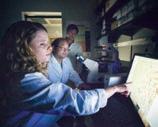

Fragile newborns at Emory Johns Creek Hospital will stay connected to their families through a gift from an Atlanta man who has lived for almost a century: Colin Green, 89. Green gave half of the $36,000 needed for a new camera system in the Level III neonatal intensive care unit. The NICVIEW online streaming system will allow family members to sign on from a phone, tablet, or computer and monitor their child’s ongoing care. “I thought it was really, really neat that modern technology can help stressed-out parents,” says Green, a retired aerospace engineer and former Johns Creek resident. “I’m a great believer in contributing if I can, and contributing in as meaningful a way as I can.”

For 17 years, Emory pulmonologist and Professor of Medicine Kenneth Leeper (above, middle) went beyond what was required for Emory patients, students, and research. To Leeper, who died last year, the best outcomes in medicine depended on teamwork, and his hearty laugh and gift for storytelling inspired others to do their best on behalf of patients. Gifts from family and friends established the Kenneth Leeper Memorial Education Fund, which supports clinical research and teaching at Emory University Hospital Midtown, where Leeper was based. The fund will also sponsor projects by nurses in the ICU, respiratory therapists, and other care team members. “For Ken, it was never how well are we doing,”
Hemophilia of Georgia has made gifts and pledges of more than $25 million to Emory over the years. One major result: Three endowed chairs (including the Sidney F. Stein Chair in Hemophilia and Hemostasis) and a professorship that enables Emory to attract leading hematologists to Georgia’s pediatric and adult treatment programs at a time when many were leaving for oncology. The organization also funds Emory research that is targeting gene therapy, expected to lessen hemophilia patients’ need for clotting factor. In honor of their CEO of 30 years, Patricia Dominic, who recently retired, Hemophilia of Georgia gave $2 million to Emory to fund fellowships to train future clinicians and researchers focused on bleeding disorders. To develop clinical scientists, the organization gave generous grants to Emory Assistant Professors of Pediatrics Robert Sidonio and Shannon Meeks, and Assistant Professor of Pathology and Laboratory Medicine Sean Stowell. (See related article, p. 10)
An anonymous donor has committed $150,000 to support the Emory Department of Otolaryngology Resident Education Fund, honoring the mentorship of former department director John Turner Jr 52C 55M, John Per-Lee, and William Grist 81MR. The department, established with seven faculty members and eight residents, has grown to 30 clinical and research faculty and 20 residents working at six sites around Atlanta.

Renee Read’s research into pediatric brain cancer received a $50,000 Rally Foundation for Childhood Cancer Research Grant. Read focuses on glioblastomas, the deadliest primary malignant brain tumors in children. She is an assistant professor in the departments of Pharmacology and Hematology and Medical Oncology in Emory School of Medicine and a member of the Winship Cancer Institute. “It is important to fund promising scientists like Dr. Read as we work toward closing the childhood cancer research funding gap so that no parent ever has to hear that there is no curative option for their child,” says Rally founder and CEO Dean Crowe.
The Taylor Foundation gave $10,000 for the 10,000 Women Heart Screening Project, which aims to improve the heart health of African American women in metro Atlanta through free screenings for hypertension. The project is part of the Emory Women’s Heart Center, directed by Gina Lundberg, who founded the first cardiac prevention program for women in Georgia in 1998. Heart disease is the leading cause of death for women, and Lundberg pointed out that two-thirds of all people with hypertension are undiagnosed or undertreated. Part of the mission of the Taylor Foundation, based in McDonough, Ga., is to recognize and further quality health care.
Recent headlines like these have stirred debate over rising drug prices. But none of them tell us about a drug’s real value. Does the drug cure a deadly disease or just add a few weeks to a patient’s life? Does it work for all patients or just for some? These are important—but frequently overlooked—questions when considering the value of a new drug and whether its price is justified.
I’m a medical oncologist, and I prescribe chemotherapy and other anti-cancer drugs to my patients.








I want to bring the best possible medical treatments to them, but I also consider other factors that will impact their lives, the lives of their families, and society as a whole. That’s why I’m interested in the cost of prescription drugs.
In the United States, the FDA approves drugs purely based on efficacy and safety, without a mandate to evaluate cost or value. Current legislation does not allow Medicare to negotiate the price of a drug—a price that is set by the manufacturer.
Among other things, this has led to escalating cancer drug prices. Most new cancer drugs now cost $10,000 to $15,000 per month.
The drug prices aren’t linked to the benefit they provide. Some drugs are truly game-changing innovations. Imatinib, for example, has
converted chronic myelogenous leukemia from a rapidly fatal disease into a chronic disease that some consider close to being cured.
Other drugs, such as regorafenib, extend the life of a patient with metastatic colorectal cancer by about six weeks and do not offer the possi bility of a cure to anyone.
But why do I care about drug prices, as a physician?
Surely my responsi bility is just to give the best possible care to my patients, regardless of cost, right?

We are all paying for these high drug prices.
Your taxes are paying for patients with Medicare and Medicaid.
High drug prices can drive up the cost of private insurance expenses, which are often taken directly by your employer from your pay.


Deductibles and co-pays are increasing rapidly, due to increasing health care costs.
Recent data has clearly demonstrated
Daniel Goldstein is an adjunct assistant professor at Emory School of Medicine and an oncologist at Rabin Medical Center in Israel.“HIV drug goes from $13.50 a tablet to $750 overnight”
“Cancer drugs doubled to $10,000 per month”
“Senate blames greed for $1,000 hepatitis C drug”
—Daniel Goldstein, The Washington Post







The Juris Master (JM) is a customizable 30-credit-hour program that can be completed full-time in as few as 10 months or part-time in up to four years. This degree is designed to enhance your knowledge of the law within your chosen profession or industry. Scholarships are available.

“The Juris Master program helps me provide better care to my patients, better education to my trainees and better service to the University.”
